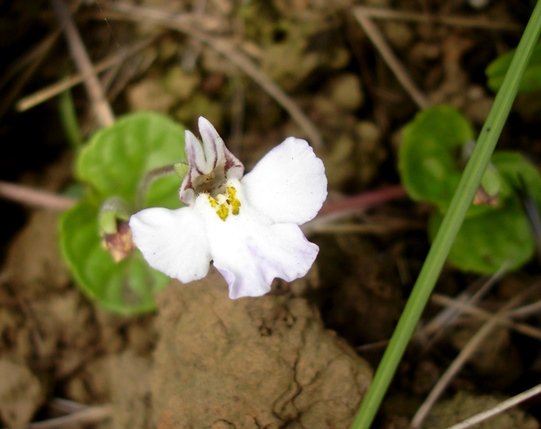Lobelia maybe

Author: Ivan Lätti
Photographer: Judd Kirkel Welwitch
This Lobelia-like flower photographed in the KwaZulu-Natal Drakensberg could not be identified. It has the two-lipped Lobelia structure of a small, split upper lip and bigger three-lobed lower lip. The broadly rounded and angular lower lip lobes with uneven and wavy margin parts are, however, quite unlike Lobelia. So are the yellow blotches in the centre.
Many lobelias are blue, while white ones do occur widely, sometimes as a second or third colour of a species. The blue Lobelia erinus found widespread, also in the Drakensberg, is occasionally white and the lower lobes can be broad, but not in the shape of those in the photo. L. pteropoda of KwaZulu-Natal and the Eastern Cape can be white, its lower lip lobes smoothly narrow with spiky tips. The hemispherical, veined leaves present here did not take the search forward.
Searching the family, there is one Grammatotheca species in South Africa, Grammatotheca bergiana, commonly known as the water lobelia but it resembles lobelias in general more than it does this flower. Plants of the Wimmerella genus, some of which are lobelia-like, grow in the Western Cape and to a lesser extent in the Eastern Cape and the Northern Cape. Their flowers don’t have these broad, wavy lobes though. Other than these two genera Lobeliaceae only has Monopsis and Cyphia in its South African representation, not likely solutions for this quest.
We conclude with unknown species, hybrid or photo mix-up (Manning, 2009; Leistner, (Ed.), 2000; Pooley, 1998; iNaturalist).

